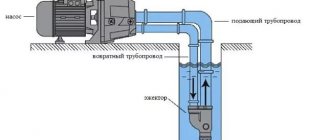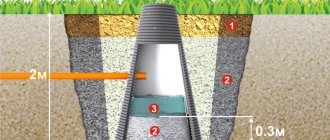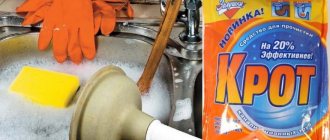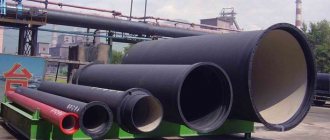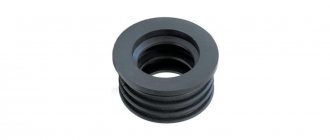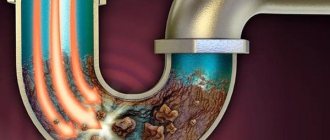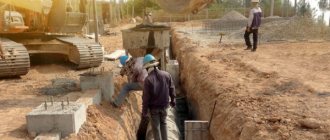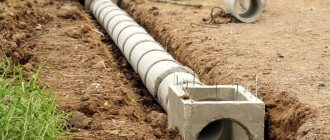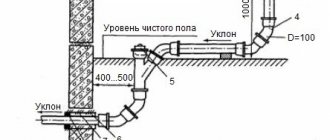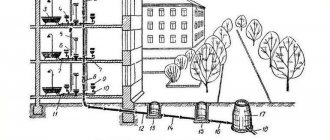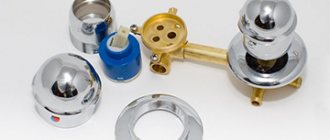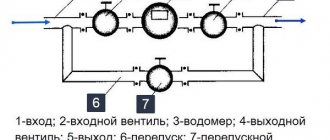Application
Centralizers have a wide range of applications. This is due to the fact that they are designed for welding pipes of various types and diameters. Because of this, they are used in the assembly of pipelines in the municipal and oil and gas industries. Centralizers are used to fix adjacent pipeline fragments during welding.
The relevance of these tools is determined by the great complexity of combining the connections of fragments of main pipelines by welding, especially of large diameters. This is due to sagging due to the low rigidity of the connected fragments. This must be avoided by ensuring alignment. Otherwise, the quality of the connection will significantly decrease. Moreover, it must be taken into account that coaxiality does not always mean parallelism.
Fixing the fragments ensures stable dimensions of the welding zone. In addition, if a centralizer is used for welding, differences are not formed on the inside of the joint, causing flow turbulence and increasing resistance during pipeline operation. That is, these defects worsen the hydraulic parameters, as a result of which more powerful pumping equipment is required.
Precise positioning ensures the same width of the weld around the circumference in the absence of undercuts, lack of fusion, or sagging, which increases strength. In addition, thanks to this, the use of mechanized welding is permissible.
Purpose
The main purpose of the centralizer is to securely fix the elements to be welded in the correct position. If two pipes are offset relative to each other or they vibrate or move during the welding process, then it will be impossible to obtain a high-quality seam. Under severe load, the pipeline may burst at the site of a poorly made welded joint.
Advice! Most often, centralizers are used when making welded joints of large diameter pipes.
Alignment when performing welding work is carried out using a special device. There are several types of centralizers, but they have the same operating principle. Both ends of the parts to be welded are covered with casing rings and fixed in the desired position using a special clamp.
Advice! The diameter of the casing rings can be changed depending on the size of the products to be welded.
Benefits of use
The use of centralizers for pipe welding has the following advantages:
- the ability to make a seam as accurately as possible, high quality work reduces the risk of accidents on the pipeline;
- centralizers are mobile devices, so they are easy to transport;
- Most models are functional; they can be used to work with pipes made of metal and polymer materials of different diameters.
Kinds
Several criteria are used to classify centralizers:
- technological purpose;
- design;
- number of fixation points;
- scope of application.
The first criterion refers to the method of positioning the tool. Based on this, they are differentiated into options for outer and inner diameters. Below they are discussed in more detail.
The design implies the use of parts of various configurations and types in the device. Determined by the purpose of the tool, including the configuration of the pipeline. Thus, the main part of the segments is located in a straight line, but there are also curved sections.
The number of fixation points is determined by the diameter of the pipeline.
Small segments are fixed on one side, and for pipes from 400-600 mm, double-sided fixation is used.
Based on the scope of application, centralizers are differentiated into household and professional ones. Models of the first type are distinguished by their compact size, manual drive and low cost. They are designed, for example, for welding home water pipes. Professional options are much more complex and expensive. They are focused on laying main pipelines.
External
These instruments are presented in detachable designs. Fixation of pipes is carried out in various ways, on which the classification of external centralizers given below is based. In general, for this type the operating principle is to retain from the outside. All external tools are marked with the letters “CN” and the numerical value of the peak outer diameter in mm.
- Multi-link models are structures made of links connected by finger joints. There are several technologies for tightening them: manual, screw mechanism, hydraulic power drive. The latter option is characterized by the greatest force and, therefore, provides the best centering. These centralizers are used for pipes with a diameter of up to 2000 mm. They are characterized by problems with reliability and durability due to two factors. Firstly, over time the gaps increase due to wear. Secondly, the finger joints may break.
- Arched options include 2 terminals with hinged parts. The latter, when centered, overlap each other. Tightening is done manually or hydraulically. The number of sections is selected based on the diameter. This external centralizer is simpler in design and more reliable than models of the previous type due to the smaller number of parts. Plus it's tougher. However, such options are designed for pipes of smaller diameter (up to 900 mm).
- Eccentric centralizers are similar in design to arched ones. The difference is the use of an eccentric clamp to clamp the terminals. It provides faster centering, but requires high qualifications due to the possibility of spontaneous detachment if the fixation is insufficient. In addition, the mechanism quickly loses clamping force due to wear. Based on this, they are used for pipes with a diameter of up to 400-500 mm.
- Chain centralizers include a chain as the main structural element, as well as a tightening mechanism. The latter has only a manual drive. Some models are equipped with leveling screws to correct pipe geometry. This is the most mobile and efficient version of centralizers. Therefore, such tools are used both when creating pipelines and during repairs. The maximum diameter for these options is 1400 mm.
- Clamp models consist of clamps and a lever mechanism. Based on the configuration of the target structures, arc and rectangular clamps are found. The bottom element is usually flat. The clamping mechanism is most often manually driven, but it can also be hydraulically driven. These are compact centralizers for small diameter pipes. Typically used in municipal and domestic areas.
External centralizers of any type require the use of additional equipment in the form of stands, working platforms, lifting devices, etc.
Domestic
Such instruments, in comparison with external ones, have a complex design. This is explained by the greater difficulty of ensuring the alignment of the internal diameters with the external one. The operating principle is based on applying pressure to the walls from the inside. The marking uses the letter designation “CV”.
A significant difference between internal centralizers and external ones is that they are designed for use both during welding and during pipeline operation.
In the second case, they serve to eliminate deflection under the influence of soil subsidence and its own weight. For most models, these capabilities are provided by a hydraulic drive. Moreover, regulation of the speed of movement of the hydraulic clamps is provided, as a result of which DC motors are used in the hydraulic drive control system.
Manually driven models are designed for welding structures with an internal diameter of up to 300 mm, while conventional ones are designed for pipelines over 2000 mm.
Specialized models for small-diameter pipes are distinguished by the presence of a spring clamp. They are similar in design to external centralizers for drilling oil and water wells.
The principle of operation is to push a pipe onto a second pipe using a load-lifting mechanism, at the end of which a centralizer is located. Next, hydraulics create the required clamping force. After this, welding can begin. In this case, a fan is necessary due to the strong heating during operation.
Internal centralizer used for welding polyurethane foam-coated pipes used in main heating and water supply networks. This material acts as insulation and is used to place a cable that monitors the condition of the pipeline. A heat-resistant shell is applied on top of it. Because of this, welding is only possible from the inside.
Main types of centralizers
All mechanisms that are on sale today can be divided into two categories. These are internal and external centralizers.
Outdoor type equipment is designated “CN”. These systems are designed for installation on the outside of the articulated elements. Regardless of the overall dimensions, they are easy to use, easily mounted on the pipe and allow alignment to be carried out as quickly and efficiently as possible. External devices are a wide liver of centralizers. There are eccentric, link, hydraulic and other configurations.
The internal centralizer for pipes is designated “CV”. It is a hydraulic installation. Equipment of this type pushes the edges of the connected pipes from the inside, shifting the media towards each other. The advantage is the ability to use the tool for products of different diameters.
Advantages and disadvantages
The main advantages of centralizers include:
- improving the quality of welding due to precise positioning and fixation, which ensures a long service life;
- reduction of labor costs;
- mobility;
- low cost;
- multifunctionality, consisting in applicability for pipes of different types and sizes.
The main disadvantage of centralizers is considered to be a slight increase in the cost of work. In addition, many industrial models are characterized by large mass (up to hundreds of kg). Therefore, their use requires lifting devices. This also complicates and increases the cost of work.
You can also compare the external and internal views.
Tools of the first type are characterized by the following advantages:
- small dimensions and weight for most models;
- ease of use;
- Possibility of use under any conditions.
The main disadvantage is the fragmentary execution of work due to the need to constantly move the tool.
The main advantage of internal centralizers is to ensure continuous welding. However, these are large and heavy instruments with complex designs that require lifting equipment.
What are they?
Centralizers for welding work are classified according to several criteria:
- according to the installation location - there are internal and external models;
- According to the method of fastening, arched, chain, clamp, multi-link, eccentric are distinguished;
- By area of use, professional and household equipment are distinguished.
Advice! Professional welding centers are functional models that are used for welding main networks. Household models are intended for use in private construction; with their help, you can independently build a pipeline at your dacha or on the sites of country cottages.
How to choose?
To choose the right centralizer model, you need to take into account the conditions in which the device will be operated:
- Pipe diameter. Each model has restrictions on the diameter of pipes for which it can be used.
- Material. Thus, pipes with a polyurethane coating cannot be welded using external centralizers; internal ones must be used.
- Scope of work. If you plan to carry out work on the side of the pipeline on the site of a private house, then it is enough to use the simplest and cheapest option - a chain external centralizer. If equipment is purchased for large-scale work, then preference should be given to professional models.
- Pipeline operating conditions. If the line will be used to transport media under pressure of more than 5 atm, then devices with manual clamping cannot be used; the use of hydraulically driven equipment is required.
So, a centralizer is a necessary equipment for welding work if pipes are connected end-to-end. You need to choose a centralizer model taking into account which pipes will be welded, as well as taking into account the pressure of the transported medium.
Features of pipe welding in winter
Such work with pipes in winter has its own difficulties. At low temperatures, the removal of gases from the molten metal deteriorates. As a result, residual stresses remain in the connection, which leads to increased brittleness of the connection.
When the temperature drops, it is recommended to use electrodes of the following brands:
- UONI-13/13;
- UONI-13/55;
- SM-11;
- WCC-1.
Their use makes it possible to obtain a seam with a greater degree of plasticity and toughness.
The work has the following features:
- The joint is cleared of dirt, snow and ice.
- The pipes are connected with minimal gaps.
- The equipment is set to a welding current lower than standard by 15–20%. This makes it possible to improve the cookability of the metal.
- If there is extreme cold, the area is preheated to 200 °C.
There are grades of steel that cook well in frosty weather conditions. These include 14ХГС, 14ГС, 19Г.
